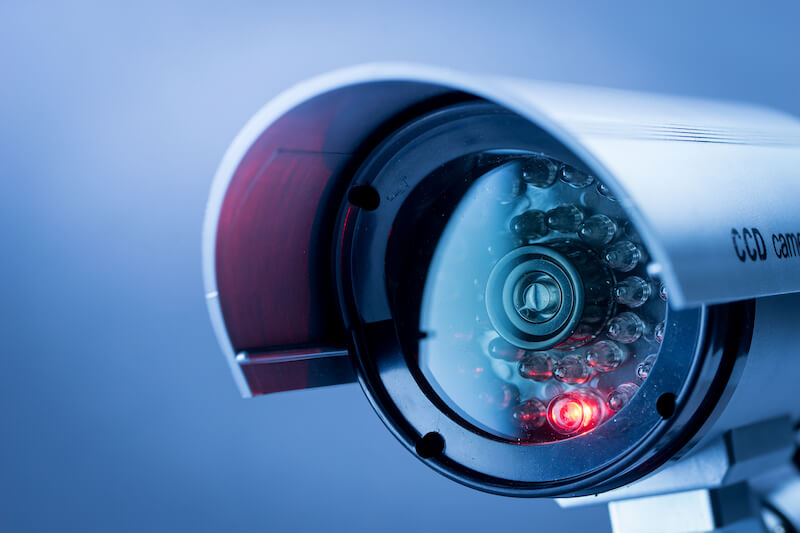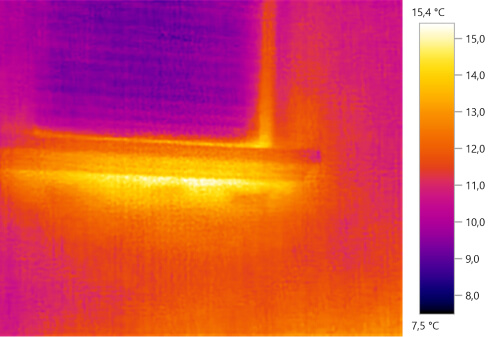Our Commitment
At the first inspection, an inspector meets with your project manager to go through our
Loss Control Toolbox, which outlines the best practices for construction projects in
order to avoid catastrophic fires and additional losses.
At the first inspection, an inspector meets with your project manager to go through our
Loss Control Toolbox, which outlines the best practices for construction projects in
order to avoid catastrophic fires and additional losses.
Construction sites are dynamic installations. They’re subject to equipment and property theft, vandalism, fire, and water damage.
The goal of each of our approved security vendors is to not just intercept arson, theft, and vandalism attempts, but to prevent them altogether with the visible presence of high-tech equipment. They utilize sophisticated video analytics to detect unauthorized activity and send real-time audio and visual alerts from the vendor’s monitoring center, ultimately mitigating losses for the insured. Additionally, these vendors employ systems that are able to detect water flow, thus reducing the impact of a water damage loss.
Our list of vetted security vendors is curated specifically to highlight companies we have deemed outstanding in their field when it comes to the protection of construction sites based on our experience with projects nationwide.
*The independent third-party security vendors listed on this website is strictly for convenience. The decision to select, hire, and/or manage any of these vendors is the sole responsibility of the end user. These third-party vendors are not agents for, not joint ventures of, not employed by, and do not work for TRU. TRU does not make and expressly disclaims any warranty, guarantee, or promise, whether expressed or implied, including, without limitation, any implied warranty of merchantability, fitness for a particular purpose, the suitability or quality of work or materials to be used and/or installed by, or the workmanship of the vendors selected and hired by the end user.
Vendors require a signed, completed TRU Security Agreement to provide a quote. Contact your TRU Underwriter or Security.Vendor.Application@truins.com for more information.

TRU-Approved surveillance companies* are regularly audited to ensure equipment quality and monitoring center service of the highest standards. In an effort to expand options to clients, this program focuses on adding new companies, able to meet the TRU-Approved Security Standards, to our list.
See below for more information on the TRU Minimum Performance Requirements.
This program adds supplemental technology to projects requiring more than the Minimum Performance Requirements. Beginning with the first line of defense, TRU-Approved vendors implement smart-fencing, capable of alerting for intrusion and equipped with highly developed sensors to reduce false alarms. These vendors then expand the secure perimeter by utilizing Thermal Imaging Cameras, capturing the heat signature of potential intruders in low-light and zero-light conditions.






This program continues our philosophy regarding the benefit of combining technology with programmatic solutions to mitigate property damage. TRU-Approved vendors combine specialized equipment to notify of irregular water flow, with an additional emphasis on the importance of end-of-day close out procedures.
In addition to diligent protocols, many non-arson fires can be prevented with the use of a handheld Thermal Imaging Camera (TIC). The focus of our TIC initiative is expanding awareness of the benefits and versatility of this technology, with the aim of usage becoming more widespread within the industry. The ability to “see the heat” is instrumental in mitigating fire damage—our primary objective. TRU also deploys this equipment at select projects to ensure proper installation of windows, doors, and insulation, as well as to verify the adequacy of welds and electrical work.






TRU-Approved surveillance companies* are regularly audited to ensure equipment quality and monitoring center service of the highest standards. In an effort to expand options to clients, this program focuses on adding new companies, able to meet the TRU-Approved Security Standards, to our list.
See below for more information on the TRU Minimum Performance Requirements.



This program adds supplemental technology to projects requiring more than the Minimum Performance Requirements. Beginning with the first line of defense, TRU-Approved vendors implement smart-fencing, capable of alerting for intrusion and equipped with highly developed sensors to reduce false alarms. These vendors then expand the secure perimeter by utilizing Thermal Imaging Cameras, capturing the heat signature of potential intruders in low-light and zero-light conditions.



This program continues our philosophy regarding the benefit of combining technology with programmatic solutions to mitigate property damage. TRU-Approved vendors combine specialized equipment to notify of irregular water flow, with an additional emphasis on the importance of end-of-day close out procedures.



In addition to diligent protocols, many non-arson fires can be prevented with the use of a handheld Thermal Imaging Camera (TIC). The focus of our TIC initiative is expanding awareness of the benefits and versatility of this technology, with the aim of usage becoming more widespread within the industry. The ability to “see the heat” is instrumental in mitigating fire damage—our primary objective. TRU also deploys this equipment at select projects to ensure proper installation of windows, doors, and insulation, as well as to verify the adequacy of welds and electrical work.
Site security is a critical component to ensuring the site is protected during non-working hours. Having a TRU-approved Electronic Surveillance System may be required to obtain a TRU policy.
For additional information on minimum performance requirements for surveillance systems, contact: Security.Vendor.Application@truins.com
Nick Hays, VP Risk Management
nick.hays@truins.com
512.550.3729
Brandon Cruz, Security Analyst
brandon.cruz@truins.com
512.532.5548